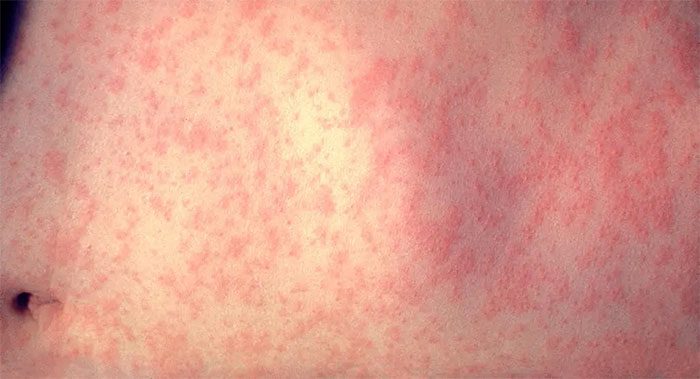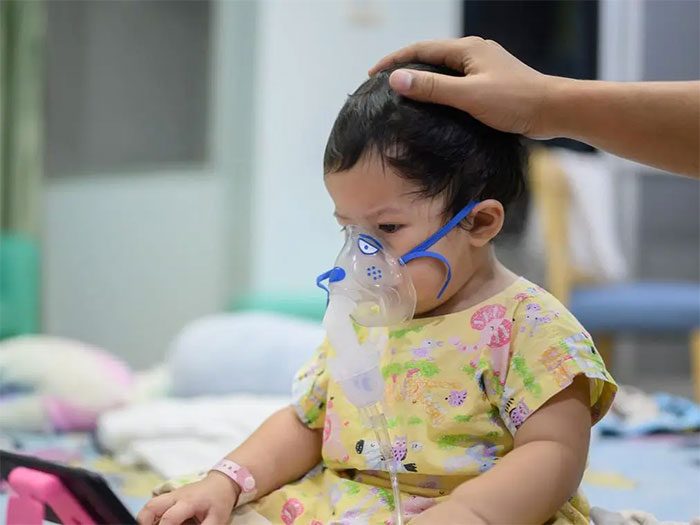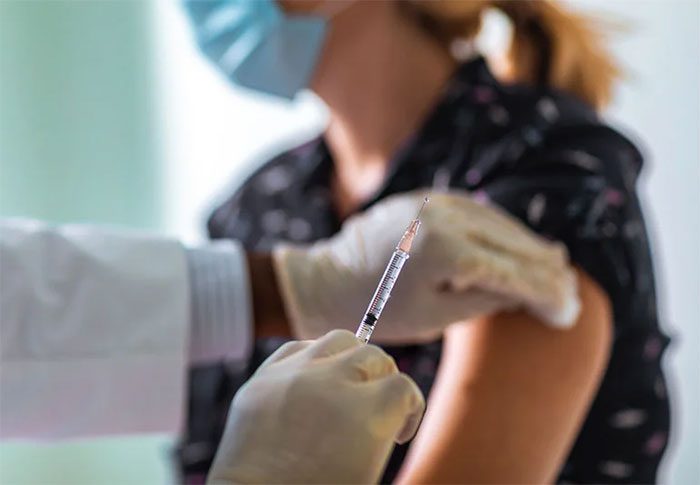Airborne diseases are caused by viruses and bacteria that can linger in the air.
Viruses and bacteria in the air tend to spread easily and can be more challenging to control than other pathogens. They often begin to spread when an infected person coughs or sneezes, causing others nearby to inadvertently inhale them. Once inhaled, these germs can reside within the body and cause illness.
Distinguishing Airborne Diseases from Droplet Transmission
- Airborne diseases: Occur when pathogens float in the air after an infected person talks, coughs, or sneezes. These pathogens can remain suspended in the air, allowing others to inhale them even after the initial infected person has left the vicinity.
- Droplet transmission: Occurs when pathogens from respiratory secretions of the infected person are propelled into the eyes, nose, or mouth or through cuts and wounds on another person’s skin.
These droplets can contaminate the surrounding environment for a certain period (depending on the pathogen). Surfaces such as tabletops, doorknobs, computer keyboards, phones, and stair railings are particularly susceptible to contamination. If your hands touch these contaminated surfaces and then you touch your eyes, nose, or mouth, you may become infected.
Types of Airborne Diseases
According to the Centers for Disease Control and Prevention (CDC), airborne diseases can spread through direct or indirect transmission, depending on the type of pathogen involved.
Airborne diseases spread through aerosol particles that are small enough to move through the air.
Additionally, as noted by VeryWell, some airborne viruses can survive on surfaces for 1 to 2 hours after leaving an infected person’s body. Infection can occur by touching a surface with the virus and then bringing your hands to your eyes, nose, or mouth.
There are many different types of airborne diseases, with the most common including:
Measles
Measles is one of the most dangerous airborne diseases, potentially affecting 90% of people who come into close contact with an infected individual. The virus that causes measles resides in the mucus of the nose and throat and spreads when an infected person coughs or sneezes.

Measles rash. (Image: ST).
Measles is typically caused by an RNA virus from the Morbillivirus genus within the Paramyxoviridae family. The measles virus can remain airborne for up to 2 hours after the infected person has left the area. You can spread the disease to others up to 4 days before and 4 days after the rash appears.
Children under 5 years old, adults over 20, pregnant women, and individuals with compromised immune systems are at higher risk for complications and more severe symptoms from measles.
Tuberculosis
Tuberculosis (TB) is a bacterial infection that primarily affects the lungs and throat. When a person with TB coughs, talks, or laughs, the TB bacteria are released into the air. TB is not transmitted through touching, kissing, or sharing food. Symptoms of TB vary among individuals, depending on the location and amount of bacteria residing in the infected person’s body.
Individuals with weakened immune systems are at the highest risk of contracting the disease, and TB symptoms can appear within days after exposure. In many cases, however, it can take months or even years for the TB bacteria to become active. Once the disease is active, the bacteria multiply rapidly and attack the lungs.
Common symptoms of tuberculosis include a persistent cough lasting over 3 weeks, chest pain, coughing up blood or mucus, fatigue, unexplained weight loss, loss of appetite, chills, fever, and night sweats.
Other Diseases
Measles and tuberculosis are two classic examples of airborne diseases. Other diseases spread through respiratory droplets and can survive in the air or on surfaces include:
- Common cold caused by Rhinovirus.

Over 100 types of germs cause the common cold. (Image: ST).
- Chickenpox caused by the Varicella zoster virus. The disease can spread through contact with skin lesions but also through the air. If you have chickenpox, you can spread the disease 1-2 days before the red spots appear and it may take up to 21 days after exposure for the illness to manifest.
- Mumps caused by the paramyxovirus is another highly contagious viral infection. You can transmit it to others before symptoms appear and up to 5 days after that.
- Whooping cough is an infection caused by the bacterium Bordetella pertussis. Whooping cough causes swelling in the upper respiratory tract leading to persistent coughing, with the highest infectious risk occurring about 2 weeks after the cough begins.
- COVID-19 caused by the SARS-CoV-2 virus, although COVID-19 is typically not considered an airborne disease, in certain situations, the SARS-CoV-2 virus behaves similarly. The most common symptoms of COVID-19 include fever, cough, fatigue, and shortness of breath.
- Aspergillosis is an infection caused by the Aspergillus fungus.
- Anthrax is an infection caused by exposure to Bacillus anthracis spores. This serious bacterial infection can be transmitted from animals to humans.
- Diphtheria is caused by the bacterium Corynebacterium diphtheriae. Diphtheria damages the respiratory system of the infected person and can lead to complications affecting the heart, kidneys, or nerves.
- Respiratory Syncytial Virus (RSV) is another cause of the common cold but can be dangerous in infants and the elderly.

RSV poses a risk of severe illness in premature infants and newborns. (Image: ST).
- Viral meningitis causes inflammation around the brain and spinal cord. Various types of viruses can cause meningitis, but not all of them are transmitted through the air.
Symptoms of Airborne Diseases
Airborne diseases often lead to one or more of the common symptoms listed below. Note that these symptoms may vary in severity, and the number of symptoms experienced depends on the nature of the infection as well as the type of virus or bacteria involved.
Specifically:
- Rhinitis, sinusitis, pneumonia
- Coughing
- Sneezing
- Chest congestion
- Runny nose
- Sore throat
- Salivary gland inflammation
- Headaches
- Muscle aches in specific areas or throughout the body
- Poor appetite, loss of appetite
- Unexplained weight loss
- Fever or chills
Airborne diseases are more likely to cause severe illness in the elderly, young children, and individuals with compromised immune systems.

Symptoms of airborne diseases vary among individuals. (Image: ST).
3. Preventing Airborne Diseases
Many airborne diseases are preventable, and if you or someone in your household is affected, you can take proactive measures to ensure health and reduce the risk of transmission.
Vaccines
There are currently several vaccines available for airborne diseases such as COVID-19, measles, and chickenpox. Vaccines are crucial in reducing the number of infections, lowering the risk of severe disease progression, and are the best way to protect yourself and your family from illness. Vaccination should be comprehensive, including regular booster doses.

Vaccination is the best way to prevent airborne infectious diseases. (Image: ST).
Maintaining Cleanliness
The importance of hygiene is always emphasized in preventing infectious diseases in general and airborne diseases in particular. Always cover your mouth and nose with a disposable tissue or your elbow when coughing or sneezing if you are sick.
Don’t forget to wash your hands regularly before eating, after using the restroom, after touching surfaces in public places, or when a family member is sick.
Maintaining a safe distance of over 2 meters in crowded or poorly ventilated areas is a lesson learned after 3 years of dealing with COVID-19. This also means keeping away from those showing respiratory symptoms or diagnosed with infectious diseases.
Wearing Masks
You can protect yourself during the cold and flu season or during COVID-19 outbreaks in your area by wearing a mask when in crowded places or in a household with infected individuals.
Keep your home well-ventilated by regularly opening windows and using air purifiers with activated carbon filters if your area frequently experiences pollution,…



















































